Practical Info
About Armenia
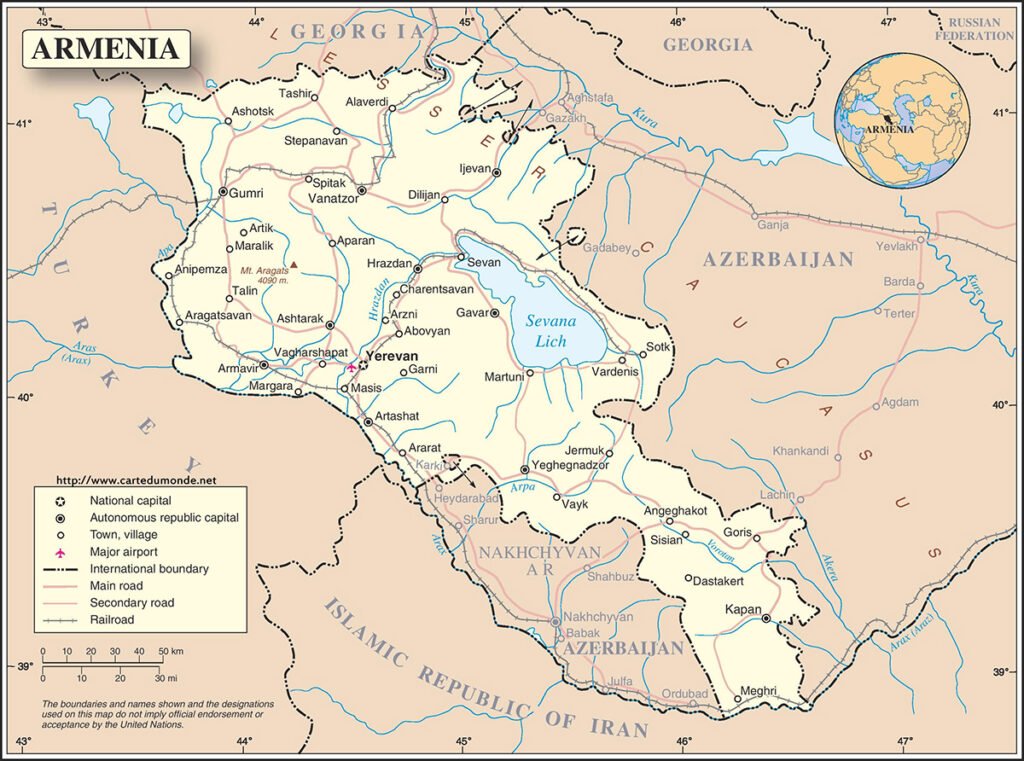
Map of Armenia : https://maps.app.goo.gl/9pP6RkRTATdTLeH49
Armenia History
Armenia is a country located in the South Caucasus region of Eurasia. It has borders with Georgia in the north, Azerbaijan in the east, Iran in the south, and Turkey in the west. Armenia has a rich history, tracing all the way back to old times, and is considered to be one of the oldest continuously inhabited regions in the world.
One of the primary reasons for travelers to visit Armenia is its old history. Armenia is perhaps one of the most established civilization on the planet, with a history dating back over 3,000 years. The nation is home to countless notable sites, including old chapels, monasteries, and fortresses. Some of the most popular tourist attractions in Armenia are the ancient Yerevan city, the Geghard Monastery, the Khor Virap Monastery, and the Temple of Garni.
Armenia’s Nature
Beside its rich history, Armenia is additionally known for its natural beauty. The nation is home to a few stunning national parks, including the Dilijan National Park and the Khosrov Forest State Reserve. Tourists can enjoy hiking, setting up camp, and wild life watching in these safeguarded regions, as well as experiencing the stunning views of the Armenian landscape.
Armenia is also well known for its remarkable food, which combines Middle Eastern and Mediterranean flavors with traditional Armenian dishes. Guests can enjoy in a range of delicious food varieties, for example, Dolma (stuffed grape leaves), Khorovats (Armenian grill), and Lavash (slender flatbread). What’s more, Armenia is additionally home to a few wineries, creating probably the best wine in the region.
Armenian Culture
Armenia is a welcoming and friendly country, with a rich and energetic culture. Guests can appreciate traditional music and dance performances, as well as go to festivals and events throughout the year. Whether you are keen on history, nature, or culture, Armenia brings something to the table for each sort of tourists.
Armenia offers a different range of activities and experiences for travelers. Beside its historic and natural attractions, the nation is additionally known for its handicrafts, for example carpet weaving, ceramics, and wood carving. Guests can find out about these traditional specialties by visiting local workshops and markets. Armenia is also a great destination for outdoor enthusiasts. The nation offers various outdoor activities, like skiing in the colder time of year, trekking in the summer, and rock climbing throughout the year.
Armenia has a mountain range that goes through the nation, and gives an optimal setting to these activities.
In general, Armenia is an exceptional and fascinating destination that offers something for everybody. Its rich history, stunning natural landscapes, and dynamic culture make it an excellent choice for tourists looking for an authentic and unforgettable travel experience.
Geology of Armenia
Armenia is situated at the intersection of the Alpine-Himalayan and Tethyan belts, making it a geographically different country. The nation is home to a different type of rocks, including volcanic and sedimentary, as well as mineral deposits like copper, gold, and silver.
The elevation of Armenia fluctuates enormously, with the nation’s absolute bottom situated at 400 meters (1,312 feet) above sea level and the highest point reaching 4,090 meters (13,415 feet). The scene is portrayed by high mountains, deep valleys, and rolling hills, with the most elevated peaks situated in the Lesser Caucasus range.
Some of the highest peaks in Armenia include:
Mount Aragats: This is the highest peak in Armenia, arriving at a height of 4,090 meters (13,415 feet). It is a dormant volcano and the highest point in the Lesser Caucasus range.
Mount Azhdahak: This peak has a height of 3,597 meters (11,801 feet) and is situated in the Geghama Mountains. It is also a dormant volcano and is encircled by various little lakes.
The geography of Armenia has played a significant part in forming the nation’s social and historical background. The country is home to various old monasteries and churches, many of which are built into the cliffs and mountainsides. These structures serve as a testament to the country’s long and complex history, which has been shaped by both natural and human forces.
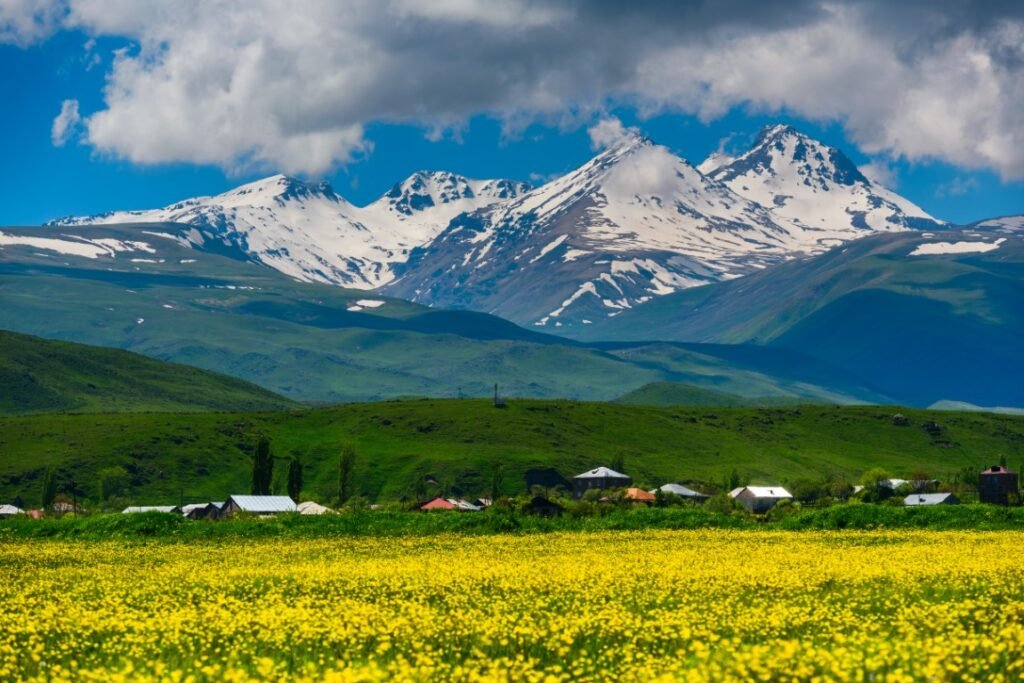
Weather
Armenia experiences four distinct seasons, each with its own weather patterns and attractions.
Spring (March to May): Spring is a beautiful time to visit Armenia, with mild temperatures and blooming landscapes. In March and April, snow can still be found in higher elevations, but temperatures begin to rise in May. The average temperature in spring is around 10-15°C (50-59°F), with occasional rain showers.
Summer (June to August): Summer is the peak tourist season in Armenia, with hot and dry weather. The average temperature in summer is around 25-30°C (77-86°F), but temperatures can reach up to 40°C (104°F) in some areas. This is a great time to explore Armenia’s outdoor attractions, such as Lake Sevan and the Dilijan National Park.
Autumn (September to November): Autumn in Armenia is a beautiful season, with colorful foliage and cooler temperatures. The average temperature in autumn is around 10-15°C (50-59°F), with occasional rain showers. This is a great time to explore Armenia’s cultural attractions, such as the ancient monasteries and churches scattered throughout the country.
Winter (December to February): Winter in Armenia can be harsh, with cold temperatures and snow in higher elevations. The average temperature in winter is around -5 to 5°C (23-41°F), but temperatures can drop to -20°C (-4°F) in some areas. This is a great time to enjoy winter sports, such as skiing and snowboarding, at Armenia’s ski resorts.
Armenia has something to offer visitors in every season, whether you want to enjoy the natural beauty of spring and autumn, the outdoor attractions of summer, or the winter sports of the colder months. The best time to travel to Armenia is between May and October when the weather is mild and there are plenty of outdoor activities to enjoy.
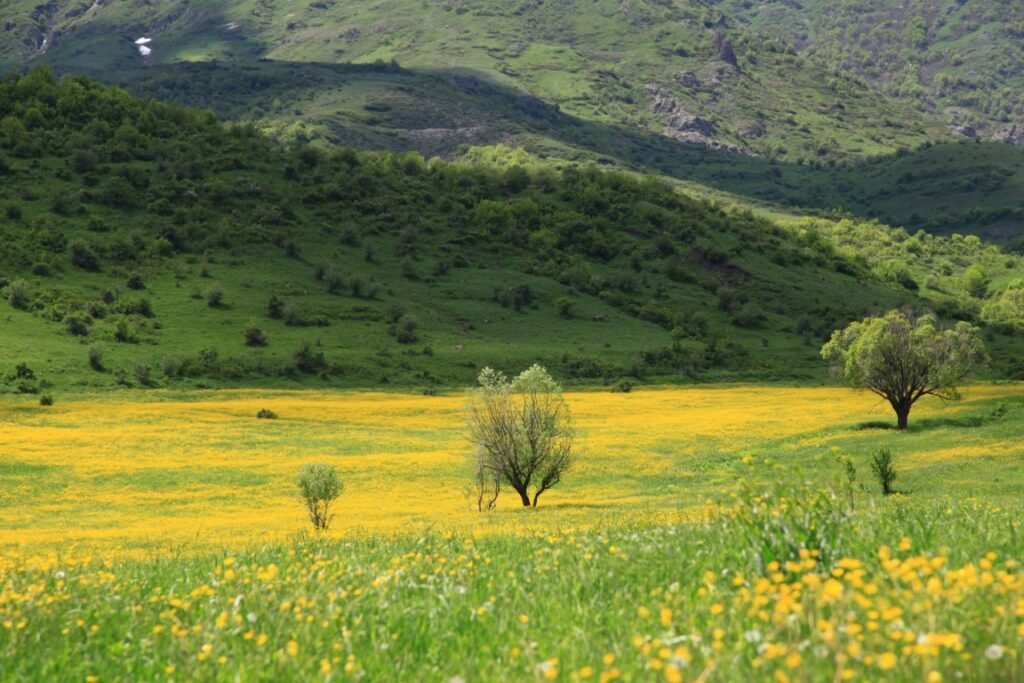
Armenia Time Zone
The country of Armenia is situated in the Caucasus and is in the Armenia Standard Time Zone. It is 4 hours ahead of Coordinated Universal Time (UTC+4).
During daylight saving time, which is from the last Sunday in March till the last Sunday in October, Armenia observes Armenia Daylight Time (AMT) which is 5 hours ahead of Coordinated Universal Time (UTC+5).
While arranging travel to Armenia, it’s important to take the time difference into account, particularly in the event that you’re going from a country in an alternate time region. This will assist you with planning your flights and activities accordingly, and stay away from any disarray or missed arrangements.
Zvartnots International Airport
Armenia’s sole international airport, The Zvartnots International Airport, serves as a crucial link between the country and the rest of the world, which is located just beyond the outskirts of the capital city of Yerevan, only a 20 min drive from city center. Named after the ancient cathedral ruins close by, this airport blends modern facilities with historical resonance, providing travelers with a welcoming and spacious terminal environment.
Zvartnots International Airport offers a wide range of amenities and services to cater to the needs of contemporary travelers. From efficient check-in services to a variety of dining options and duty-free shopping opportunities, the airport ensures that passengers’ experiences are both seamless and pleasant.
Positioned strategically and committed to delivering quality service, Zvartnots International Airport fulfills a vital role in facilitating international travel to and from Armenia, reflecting the country’s aspirations for global connectivity and hospitality.
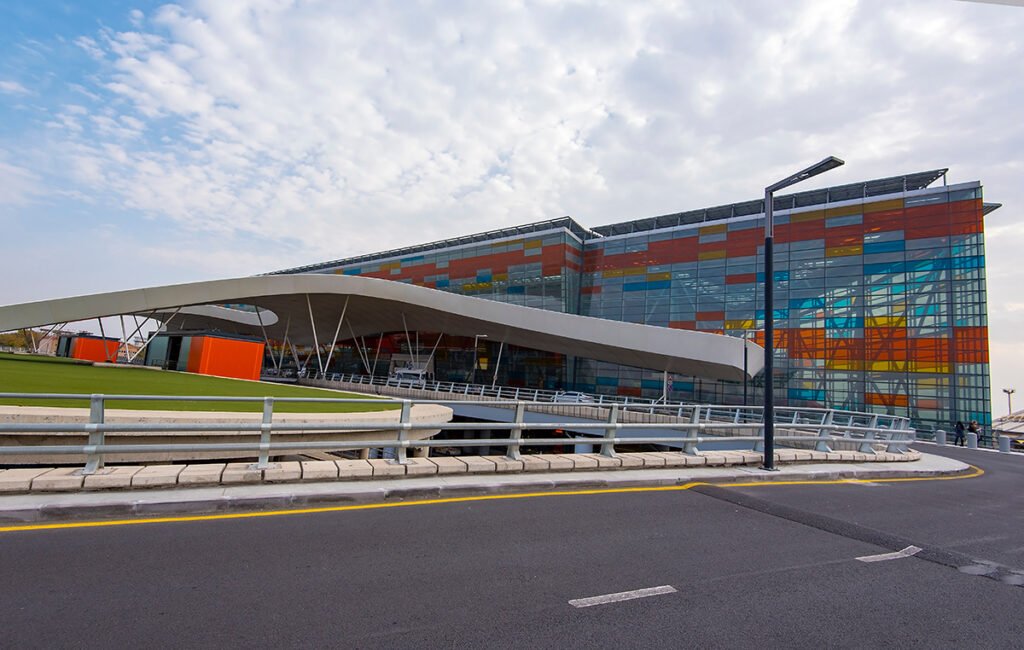
Speaking Language
Armenian is the official language of Armenia and is spoken by the majority of the population. The Armenian language has its own unique alphabet, which was created in the early 5th century.
Beside Armenian language, Russian is also widely spoken in, particularly among the older generation and those who grew up during Soviet times. English is becoming increasingly popular, particularly among the younger generation and those in the tourism industry. Other languages such as French, German, and Spanish are also spoken by some Armenians, particularly those who work in the hospitality industry.
In areas close to the border with Iran, Persian is also spoken by some Armenians. Arabic is also spoken by a small minority of Armenians, particularly those who have roots in the Middle East.
In the areas which is touristic, most of Armenians speak English too, making it relatively easy for tourists to communicate with locals. However, learning a few basic phrases in Armenian can be helpful and greatly appreciated by locals.
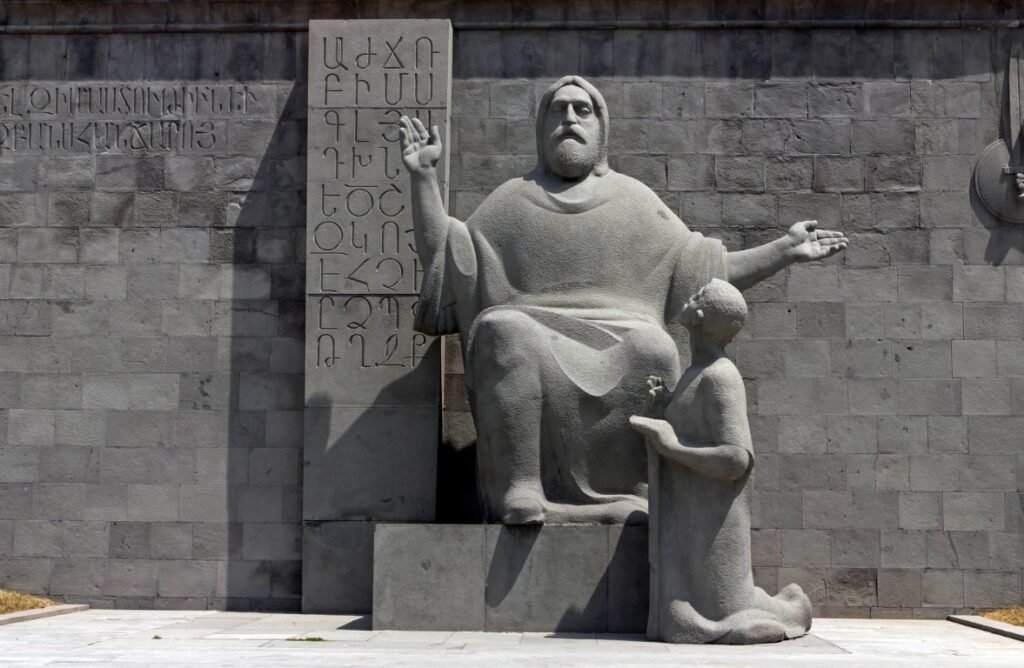
Electricity
In Armenia, the standard voltage is 220 volts and the frequency is 50 Hz. Armenia uses the Europlug Type C and Type F sockets, which are compatible with the two round pins and a grounding pin plug commonly used in Europe.
The country also has a nuclear power plant, the Metsamor Nuclear Power Plant, which currently provides around one-third of Armenia’s electricity needs.
Lately, the Armenian government has taken steps to increase the share of renewable energy sources in the country’s electricity mix. Solar power and wind power are currently being developed in Armenia, with several solar power plants and wind farms in operation or under construction.
It’s important to check the voltage and plug types of your electronic devices to ensure they are compatible with the local electrical system. If necessary, you may need to bring a voltage converter or a plug adapter to use your devices in Armenia. Some hotels and accommodations may also provide these items upon request.
Currency
The currency of Armenia is called the Armenian Dram (AMD), which has been in use since 1993. It replaced the Soviet ruble, which was the official currency of Armenia before its independence.
The dram is divided into smaller units called “luma,” with one dram being equal to 100 lumas. However, due to inflation, the luma is not currently in use, and only the dram is used in transactions.
The Armenian Dram is denominated in banknotes of 1000, 2000, 5000, 10,000, 20,000, and 50,000 dram, and coins of 10, 20, 50, 100, and 200 dram. The banknotes and coins feature images of prominent figures and landmarks significant to Armenian history and culture.
The exchange rate of the Armenian Dram fluctuates with the global currency markets, and it is commonly exchanged with US dollars and euros in the country. ATMs are widely available in Armenia, and most of them accept major international credit cards such as Visa, Mastercard, and American Express.

Armenian Cuisine
The Armenian food is a rich and tasty mix of Eastern Mediterranean and Middle Eastern influences, with an emphasis on fresh, seasonal ingredients and traditional cooking procedures. Armenian gastronomy is additionally well established in the nation’s history and culture, with numerous traditional dishes which reflecting Armenia’s agricultural and culinary heritage.
Perhaps of the main ingredients in Armenian cooking is wheat, which is utilized to make different breads, pastries, and noodles. One of the most well known Armenian breads is Lavash, a slight, delicate flatbread that is many times used to wrap meats, cheeses, and vegetables.
Another important staple in Armenian food is the eggplant, which is utilized in various dishes, including Dolma (stuffed grape leaves) and moussaka (eggplant goulash).
Meat is also a noticeable part of Armenian cooking, with lamb, beef, and chicken being popular choices. Kebabs, barbecued meats on sticks, are a most loved Armenian dish, as are khorovats, barbecued meats cooked over an open fire.
Other famous Armenian dishes incorporate khash, a traditional soup produced using cow’s feet and tripe.
Armenian cuisine also includes various spices and flavors, including mint, parsley, coriander, and cumin, which are utilized to add flavor and depth to dishes.
Yogurt and cheddar are also common ingredients in Armenian cooking, with Matzoon, a tart yogurt-like beverage, and string cheese being particularly popular.
Lately, Armenian cooking has earned respect and popularity, with numerous Armenian cafés and food celebrations displaying the nation’s novel and tasty cooking.

Nightlife
Nightlife in Armenia has been consistently developing and turning out to be more lively over the years, especially in the capital city of Yerevan. There are numerous choices for those hoping to enjoy an evening out on the town, from stylish bars and lounges to dance club and live music venues.
In Yerevan, probably the most well known nightlife spots are situated in the downtown region, especially around the pedestrian-friendly Northern Avenue and the surrounding streets. These areas are clamoring with action and offer a great choice for all tastes and preferences. From cozy wine bars and jazz clubs to high-energy clubs, there is something for everybody.
One of the novel parts of the nightlife in Yerevan is the overflow of open-air seating areas throughout the summer months. Many bars and bistros have outside terraces where guests can enjoy a drink while taking in the wonderful views of the city.
Beside the nightlife choices in Yerevan, there are also some famous places in different part of the country. The hotel town of Tsaghkadzor, situated in the mountains about an hour’s drive from Yerevan, is known for its enthusiastic apres-ski scene throughout the winter months. Lake Sevan, one of the largest lakes in the region, also has various famous bars and restaurants.

Internet
Armenia has a generally advanced broadcast communications sector, and intenet is generally accessible all through the country. Here are a few key facts about web access in Armenia:
Internet Penetration: According to the International Telecommunication Union, web entrance in Armenia was around 65% in 2021. This implies that most of the population has access to the internet.
Internet Service Providers: There are different internet providers in Armenia, including Beeline, Ucom, and Vivacell-MTS. These suppliers offer different packages for home and portable devices, with speeds going from 3G to 4G LTE.
Wi-Fi: This service is accessible in most open spots, including cafes, cafes, and airports. There are places which offer free Wi-Fi, while others require payment. You can also have access to Wi-Fi in places like public transports, buses and metro stations.
Internet Cafes: These small offices are still active in Armenia, particularly in smaller towns where access to computers or internet might be restricted. These offices offer PC rentals and web access at reasonable costs.
Web access is broadly accessible in Armenia and with affordable prices. However, the quality of services might be different depending on the provider company. Guests to Armenia can easily access to the internet through Wi-Fi areas or by buying a local SIM card for their cell phone.
Public Transport
In Armenia, you can have different options for public transport like buses, minibuses, trolleybuses, trams, and metro. The transportation framework is advanced and covers most significant urban areas and towns all through the country. Here is a breakdown of the various methods of public transportation in Armenia:
Buses and Minibuses
The most well-known type of public transport in Armenia are buses and minibuses. They are generally modest and helpful, and work over the course of the day. Most buses and minibuses are privately owned, and routes and timetables can shift contingent upon the administrator.
Trolleybuses
These are electric buses that run on electric wires overhead. They are well known in Yerevan, the capital city, and a few other significant urban communities. Trolleybuses are for the most part slower than buses, however they are calmer and more environmentally friendly.
Trams
Cable cars are one more famous method of public transport in Armenia. They are fundamentally utilized in Yerevan and work on a few routes all through the city. Trams are comfortable and somewhat quick, however they can become busy during peak hours.
Metro
The city of Yerevan has a single metro line that runs from the downtown area toward the northern suburbs. The metro is clean, proficient, and cheap, and it’s the quickest method for getting around the city. Be that as it may, it just has a limited number of stops. So it may not be helpful for all destinations.
Shared Taxis
Taxis, which also called “Marshrutkas”, are one more famous method for going between urban communities in Armenia. These are normally minibuses that work on fixed courses and can be waved to anytime en route. Marshrutkas can be quicker than buses since they make less stops, however they can also be more packed and awkward. Nonetheless, they are generally cheaper than long-distance buses.
Trains
Armenia has a restricted rail route network that connects a few significant cities and towns. The trains are generally slow and less frequent than buses or shared taxis, yet they can be a more agreeable method for travelling to significant distances. You can buy the train tickets at the railway station or on the internet, and there are a few classes of tickets accessible.

Armenian Drinks
Armenia has a rich cultural history and different traditional beverages. Below, there are some of the most popular drinks of the country:
Wine: Armenia has a long history of winemaking, going back more than 6,000 years. The absolute most popular Armenian wines incorporate Areni, Voskevaz, and Zorah.
Brandy: Armenian brandy is also exceptionally well known and is viewed as one of the country’s public beverages. Some of the most famous Armenian brandy producers are Ararat and Noy companies.
Beer: Armenia has a developing craft beer scene, and there are numerous microbreweries delivering top notch brews. Probably the most famous Armenian brews are Kilikia and Gyumri.
Mineral water: Armenia is home to a few natural springs. The mineral water is a well known drink in the country. The most famous Armenian mineral water brands are Jermuk and Bjni.
Tea: Armenian tea is produced using different herbs and is frequently presented with desserts or cakes. The most famous herbs used in tea are mint, sage, and thyme.
Armenia Wine
Armenia has a long and rich history of winemaking, going back over 6,000 years. The country’s winemaking custom is viewed as one of the most established on the planet. Numerous specialists accept that Armenia was one of the main spots where grapes were developed for winemaking.
The most established known winery on the planet was found in the town of Areni. The winery traces all the way back to around 4100 BC. It was found to contain a wine press, fermentation vats, storage jars, and cups. Archeologists believe that the winery was utilized. The purpose was to deliver a sort of red wine produced using the local Areni grape assortment.
Armenia’s winemaking custom went on consistently, and the nation became popular for its great wines. During the Soviet time, the Armenian wine industry was nationalized, and winemaking turned into a significant industry in the country. Nonetheless, after Armenia acquired freedom in 1991, the wine business suffered because of financial problems and a lack of investment.
In these last years, there has been a reestablished interest in Armenian wines. Numerous wineries have begun delivering excellent wines utilizing customary strategies. The absolute most popular Armenian wine assortments incorporate Areni, Kakhet, and Voskehat. Armenian winemakers are also exploring different varieties regarding new grape assortments and strategies. The nation’s wine industry is gradually recapturing its standing as a maker of excellent wines.
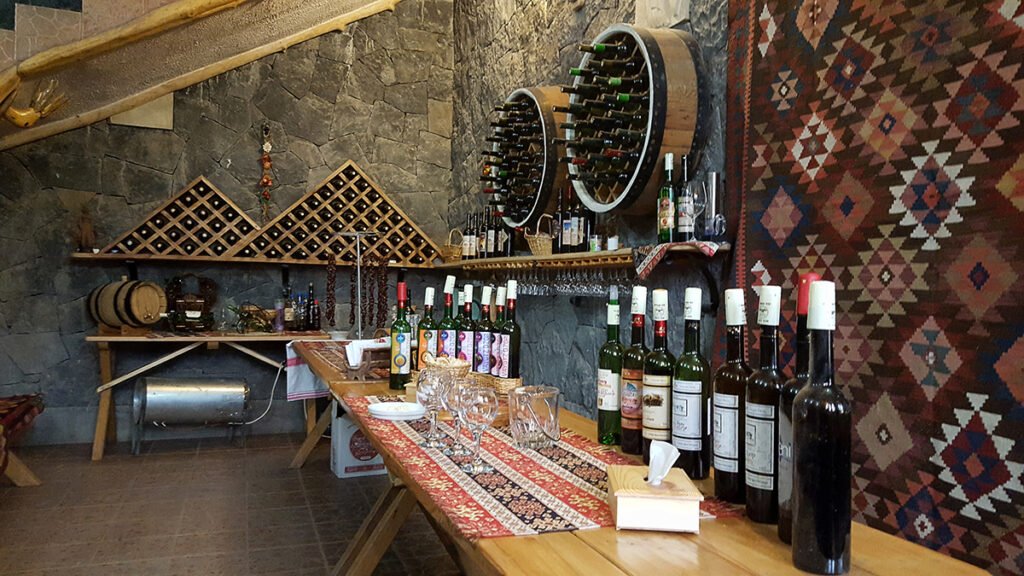
Armenian Cognac
The national drink, also called Armenian brandy, is a famous and very well-respected spirit. It is viewed as one of the public beverages of Armenia. Armenian cognac, has a long history that traces all the way back to the mid 1900s. It was when Armenian traders started bringing in cognac from France.
In the early 20th century, the Armenian liquor industry started to take off. The Armenian cognac immediately acquired a standing for its great and extraordinary taste. Armenian cognac is produced using a mix of local grape assortments, including Voskehat, Kakhet, and Mskhali. They are carefully chosen and refined in copper stills.
One of the most renowned Armenian cognac makers is the Yerevan Brandy Company. It was established in 1887 and is still in activity today. The organization creates a scope of cognacs, including the well known Ararat brand. It is named after the famous Armenian mountain.
Armenian cognac is often enjoyed as an after-supper drink or as a digestif. It is frequently presented with espresso or chocolate. It is additionally used in cooking and baking, especially in customary Armenian desserts like Gata.


